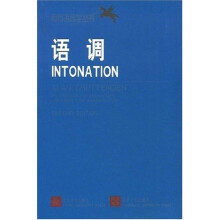Acknowledgements
Preface
Transcriptions
1 PRELIMINARIES
1.1 Prosodic features
1.1.1 Length, loudness, and pitch
1.1.1.1 Length
1.1.1.2 Loudness
1.1.1.3 Pitch
1.1.1.4 Summary
1.2 Auditory and instrumental
1.3 Prominence
1.4 Intonation
1.5 Tone languages
1.6 Pitch accent languages
1.7 Summary
Sources and further reading
2 STRESS, ACCENT, AND RHYTHM
2.1 Stress and accent
2.2 Word-stress
2.2.1 English word-stress
2.3 Degrees of stress/accent
2.4 Rhythm
2.5 Prosodic hierarchies
2.6 Summary
Sources and further reading
3 THE FORMS OF INTONATION
3.1 The historical background to intonational studies
3.2 Intonation-groups
3.2.1 Pause
3.2.2 Other boundary markers
3.2.3 Internal structure as group marker
3.2.4 Problems in group delimitation
3.3 Contours and levels
3.4 Pitch accents and nucleus
3.5 Accent range, key, and register
3.6 Whole tunes and nuclear tones
3.7 English nuclear tones
3.8 Pre-nuclear pitch accents
3.9 Alternatives to nuclear tones
3.9.1 Autosegmental approaches (1)
3.9.2 Autosegmental approaches (2)
3.10 Summary and preview Sources and further reading
4 THE FUNCTIONS OF INTONATION
4.1 Introduction
4.2 Intonation-groups
4.3 Nucleus placement
4.3.1 Broad focus
4.3.2 Narrow focus
4.3.3 New and old information
4.3.3.1 Contrastivity
4.3.3.2 Echoes
4.3.3.3 Insists
4.3.4 Normal stress
4.4 English nuclear tones
4.4.1 Local meanings
4.4.1.1 Falls
4.4.1.2 Rises (dependent)
4.4.1.3 Rises (independent)
4.4.1.4 Tonal sequences
4.4.2 Conditioning factors
4.4.3 Abstract meanings
4.4.3.1 A two-tone approach
4.4.3.2 A three-tone approach
4.4.3.3 A compositional approach
4.4.4 Tonal features
4.4.4.1 Accent range
4.4.4.2 Complexity
4.4.4.3 Stylisation
4.4.4.4 Declination and downstep
4.5 Key and register
4.6 Summary
Sources and further reading
5 COMPARATIVE INTONATION
5.1 Introduction
5.2 Style, class, and sex
5.3 Dialectal variation
5.3.1 British English
5.3.2 Variation in English dialects outside Britain
5.4 Cross-linguistic comparisons
5.4.1 Comparative intonation-groupings
5.4.2 Comparative nucleus placement
5.4.3 Comparative tone: alternative models
5.4.4 Comparative tone: basic typology
5.4.4.1 Declaratives
5.4.4.2 Yes/no interrogatives
5.4.4.3 Question word interrogatives
5.4.4.4 Imperatives and exclamatives
5.4.4.5 Pre-nuclear accents
5.4.4.6 Stereotyped patterns and chants
5.5 Intonational universals
5.5.1 Declination
5.5.2 Tonal universals
5.6 Intonational change
5.7 Intonation acquisition
5.8 Summary
Sources and further reading
6 CONSPECTUS
6.1 Prosodic, pa "alinguistic, and extralinguistic
6.1.1 Prosodic features
6.1.2 Paralinguistic effects
6.2 Intonation and punctuation
6.3 Intonation and gesture
6.4 State-of-the-art
Sources and further reading
References Index

 缺书网
缺书网 扫码进群
扫码进群




